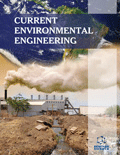Abstract
Solar energy is one of the promising renewable energy sources for desalination of saline and brackish waters. The solar evaporation rate could be enhanced by placing light-absorbing agents on the surface or bottom of the solar ponds. So far, different materials such as various dyes, blackened wet jute cloth, black plastic bubble sheets, black rubber, floating porous plates, etc. were used to induce the solar evaporation rate, but the evaporation results showed that the water evaporation enhancement using those materials was quite limited. We have recently reported the use of solar lightabsorbing carbon-Fe3O4 particles and achieved a 230% increase in solar evaporation rate. This paper focuses on mathematical modeling of the solar evaporation process assisted by this kind of floating light-absorbing material. The proposed model was used to predict the evaporation rate of the experimental tests and results showed an acceptable compatibility between the experimental and calculated evaporation rates by an error lower than 13%.
Keywords: Evaporation, evaporation enhancement, modeling, solar, solar light-absorbing.
 31
31

